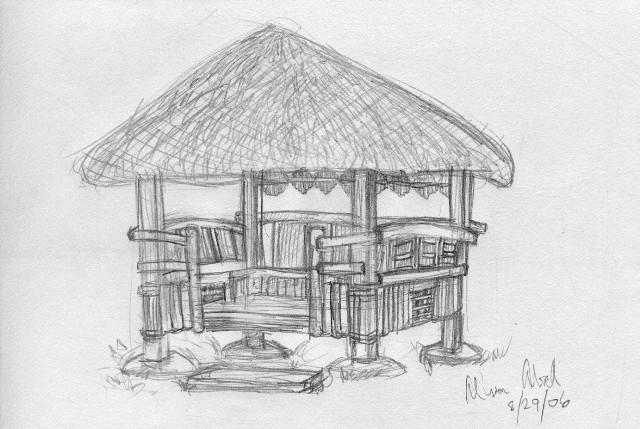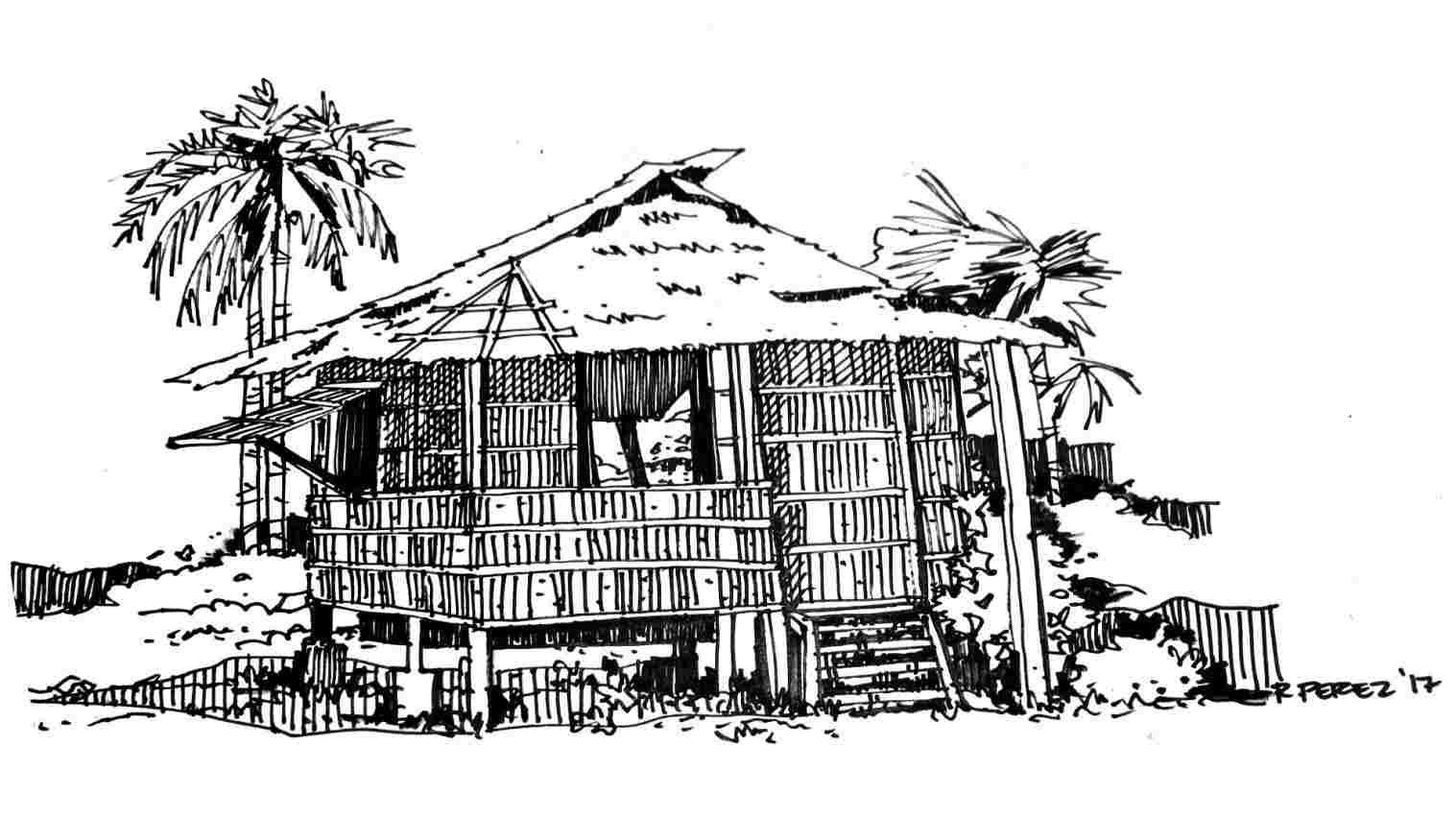Bahay Kubo Sketch Drawing
Imagine living in a humble abode made of natural materials such as bamboo, coconut leaves, and straw. A bahay kubo, also known as a nipa hut, brings to mind a peaceful, rustic way of life that is in harmony with nature. It is a traditional Filipino dwelling that has existed for centuries and continues to be a symbol of the country.

The bahay kubo may look simple on the outside, but on the inside, it is thoughtfully designed to enhance the flow of air and natural light. The open windows and elevated floor also make it resistant to floods. It is a sustainable and eco-friendly way of living that is gaining popularity again in the wake of environmental concerns and modern stressors.
Living in a bahay kubo does not come without challenges, however. It requires a certain level of adaptability and resourcefulness. The materials used may not be as durable as those found in modern homes, and maintenance is more frequent. It can also be difficult to find the right balance between privacy and openness.
Despite the challenges, there is something undeniably charming about a bahay kubo. It encourages a connection to nature, community, and the past. If you're interested in experiencing it for yourself, here are some tips on how to build and live in a bahay kubo:
How to Build a Bahay Kubo
1. Research the local building codes and regulations to ensure that your bahay kubo is structurally sound and legal.
2. Decide on the size and layout of your bahay kubo. Consider the number of rooms, openings, and materials to be used.
3. Gather the materials, which can include bamboo, nipa, sawali, and narra wood. Make sure that they are of good quality.
4. Prepare the site by clearing the area and making sure that it is level. Dig the foundation and install the posts.
5. Build the frame and walls of the bahay kubo using the materials you've gathered. Use traditional techniques like the "sahig" (elevated floor) and "banig" (woven mats).
6. Install the roof, which can be made of nipa leaves or other natural materials.
7. Finish the interior with woven mats, curtains, and other decorative elements.
8. Install the basic utilities like electricity, plumbing, and sewage.
Tips for Living in a Bahay Kubo
1. Embrace a minimalist lifestyle. One of the advantages of living in a bahay kubo is the limited space, which encourages you to prioritize the essentials and let go of unnecessary possessions.
2. Practice sustainability. A bahay kubo is a sustainable way of living, but it can be further enhanced by using eco-friendly products, practicing composting and recycling, and reducing water and energy consumption.
3. Be mindful of the weather. A bahay kubo is designed to be resistant to floods and strong winds, but it can still be affected by extreme weather conditions. Be prepared to evacuate if necessary.
4. Connect with your community. A bahay kubo is a communal dwelling by nature, and it encourages a sense of camaraderie and cooperation with your neighbors.
5. Embrace the spirit of adventure. Living in a bahay kubo may be challenging at times, but it also presents a unique opportunity to experience a different way of life, connect with nature, and learn new skills.
So there you have it, a brief introduction to the charming world of the bahay kubo. It may not be for everyone, but for those who are willing to embrace its quirks and challenges, it can be a rewarding way of living. Who knows, you might even find yourself becoming a champion of sustainable living.



Post a Comment for "Bahay Kubo Sketch Drawing"